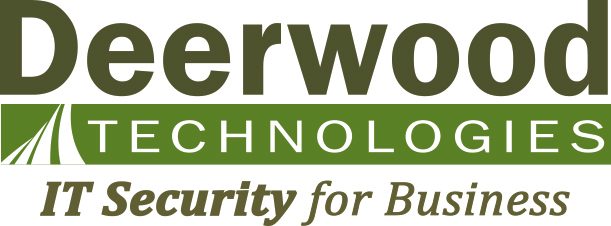Every step you take towards preventing ransomware or data security events is a step in the right direction. The best approach to cybersecurity is a layered one, starting with limiting access to your most valuable data. Identity management plays a crucial role in this layered security strategy, ensuring that only the right people and devices have access to your network. This article will guide you through the essentials of identity management, helping you protect your business with these essential strategies.
High-Level Credentials Management
Authentication and Validation
At its core, identity management revolves around the concepts of authentication and validation. Authentication is the process of verifying who someone is, while validation ensures that the access they’re requesting is legitimate. Think of it as a digital bouncer at a club, checking IDs and validating entry.
There are various methods to authenticate users, ranging from traditional passwords to more advanced options like biometrics and multi-factor authentication (MFA). Passwords are the most common method, but they come with their own set of vulnerabilities. Biometrics, such as fingerprints and facial recognition, provide a higher level of security, ensuring that access is granted only to the right individuals.
The Need for a Robust Access Framework
Who Can Access What?
Not everyone in your organization needs access to all data. Implementing a robust access framework helps delineate who can access what information within your network. This not only streamlines operations but also bolsters security.
Access Control Frameworks
Access control frameworks6+ are essential in defining these permissions. By establishing clear guidelines on who has access to what, you can prevent unauthorized access and potential data breaches.
Single Sign-On (SSO)
Single Sign-On (SSO) is a powerful tool in this framework. SSO allows users to log in once and gain access to multiple systems without needing to authenticate repeatedly. This enhances user experience while maintaining high security standards.
Third-Party Providers
Incorporating trusted third-party providers into your access framework can further enhance security. These providers offer specialized services that integrate seamlessly with your existing systems, ensuring that your access controls are both comprehensive and up-to-date.
Moving Beyond Passwords
Eliminating Passwords
Traditional password-based systems are increasingly seen as weak links in security. Passwords can be forgotten, stolen, or cracked, making them unreliable in the long run.
Biometric Solutions
Biometric authentication, such as fingerprints, facial recognition, and even voice recognition, offers a more secure alternative. These methods are unique to each individual and difficult to replicate, providing an additional layer of protection.
ID Management Frameworks
Modern ID management frameworks allow for secure integration with applications. These frameworks streamline the authentication process, reducing the reliance on passwords and incorporating more secure methods like biometrics and MFA.
Real-World Applications
Many businesses have successfully implemented these advanced identity management solutions, resulting in reduced data breaches and enhanced security. For instance, a financial services company might use biometrics for client access, ensuring that only verified individuals can access sensitive financial data.
Least Privileged Access
Principle of Least Privilege
The principle of least privilege is a fundamental concept in identity management. It means granting users the minimum level of access necessary to perform their job functions. By limiting access, you reduce the risk of unauthorized individuals gaining entry to sensitive information.
Implementation Steps
Assess Current Access Levels: Review who has access to what within your organization.
Define Access Needs: Determine the necessary access levels for each role.
Implement Access Controls: Use access control frameworks and tools to enforce these levels.
Regularly Review and Update: Continuously monitor and update access permissions as roles and needs evolve.
Benefits
Implementing least privileged access minimizes the risk of data breaches and unauthorized access, protecting your business’s sensitive information. It ensures that only those who need access to critical data have it, enhancing overall security.
Securing Your Business with Deerwood Technologies
Identity management is a critical aspect of securing your business. By understanding and implementing high-level credential management, robust access frameworks, advanced authentication methods, and the principle of least privilege, you can significantly reduce the risk of unauthorized access and data breaches.
Don’t leave your business vulnerable to cyber threats. Partner with Deerwood Technologies to ensure your data is protected and your IT is working for you. Our experts will help you implement comprehensive identity management protocols tailored to your needs. Contact us today for a free consultation and take the first step towards a more secure business environment.
By following these guidelines, you can protect your business from unauthorized access and ensure that your sensitive data remains secure.
Let Deerwood Technologies help you elevate your security and keep your business running smoothly.
FAQ’s on Identity Management for Business Owners
What is identity management and why is it important for my business?
Identity management involves verifying and controlling who has access to your network and data, crucial for preventing unauthorized access and data breaches.
How does Single Sign-On (SSO) benefit my business?
SSO simplifies user access by allowing one login for multiple systems, enhancing security and user convenience.
Why should I consider biometric authentication?
Biometric authentication, like fingerprints and facial recognition, offers a higher level of security as these methods are unique to each individual and hard to replicate.
What does the principle of least privilege mean?
It means giving users the minimum level of access necessary for their job, reducing the risk of unauthorized access to sensitive information.
How can Deerwood Technologies help with identity management?
Deerwood Technologies can implement comprehensive identity management protocols tailored to your needs, ensuring your data is protected and your IT is optimized for security.

